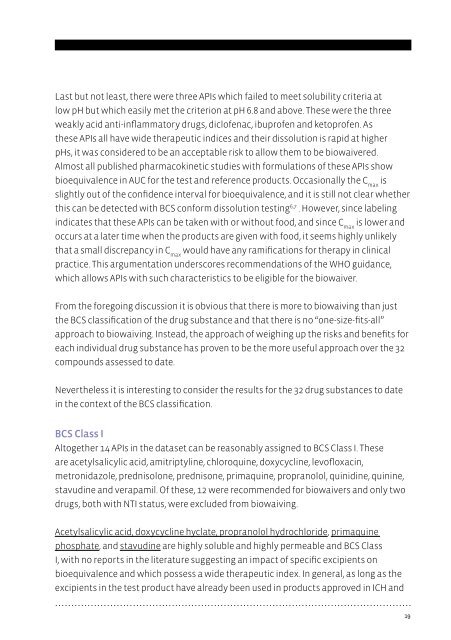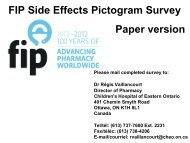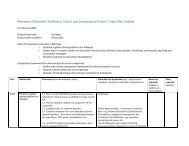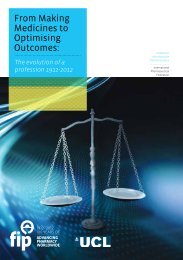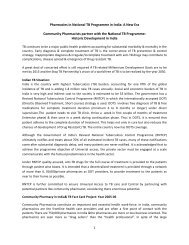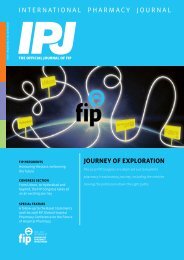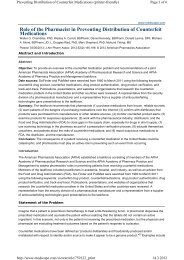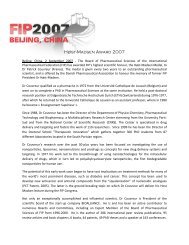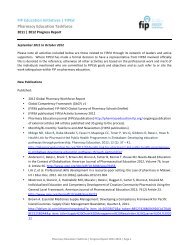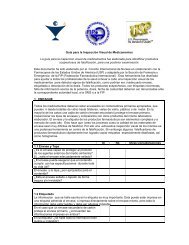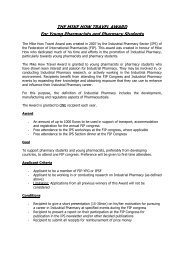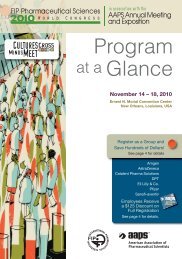THe BIOWaIVer MONOGraPHS - FIP
THe BIOWaIVer MONOGraPHS - FIP
THe BIOWaIVer MONOGraPHS - FIP
Create successful ePaper yourself
Turn your PDF publications into a flip-book with our unique Google optimized e-Paper software.
Last but not least, there were three APIs which failed to meet solubility criteria at<br />
low pH but which easily met the criterion at pH 6.8 and above. These were the three<br />
weakly acid anti-inflammatory drugs, diclofenac, ibuprofen and ketoprofen. As<br />
these APIs all have wide therapeutic indices and their dissolution is rapid at higher<br />
pHs, it was considered to be an acceptable risk to allow them to be biowaivered.<br />
Almost all published pharmacokinetic studies with formulations of these APIs show<br />
bioequivalence in AUC for the test and reference products. Occasionally the C max is<br />
slightly out of the confidence interval for bioequivalence, and it is still not clear whether<br />
this can be detected with BCS conform dissolution testing 6,7 . However, since labeling<br />
indicates that these APIs can be taken with or without food, and since C max is lower and<br />
occurs at a later time when the products are given with food, it seems highly unlikely<br />
that a small discrepancy in C max would have any ramifications for therapy in clinical<br />
practice. This argumentation underscores recommendations of the WHO guidance,<br />
which allows APIs with such characteristics to be eligible for the biowaiver.<br />
From the foregoing discussion it is obvious that there is more to biowaiving than just<br />
the BCS classification of the drug substance and that there is no “one-size-fits-all”<br />
approach to biowaiving. Instead, the approach of weighing up the risks and benefits for<br />
each individual drug substance has proven to be the more useful approach over the 32<br />
compounds assessed to date.<br />
Nevertheless it is interesting to consider the results for the 32 drug substances to date<br />
in the context of the BCS classification.<br />
BCS Class I<br />
Altogether 14 APIs in the dataset can be reasonably assigned to BCS Class I. These<br />
are acetylsalicylic acid, amitriptyline, chloroquine, doxycycline, levofloxacin,<br />
metronidazole, prednisolone, prednisone, primaquine, propranolol, quinidine, quinine,<br />
stavudine and verapamil. Of these, 12 were recommended for biowaivers and only two<br />
drugs, both with NTI status, were excluded from biowaiving.<br />
Acetylsalicylic acid, doxycycline hyclate, propranolol hydrochloride, primaquine<br />
phosphate, and stavudine are highly soluble and highly permeable and BCS Class<br />
I, with no reports in the literature suggesting an impact of specific excipients on<br />
bioequivalence and which possess a wide therapeutic index. In general, as long as the<br />
excipients in the test product have already been used in products approved in ICH and<br />
19


